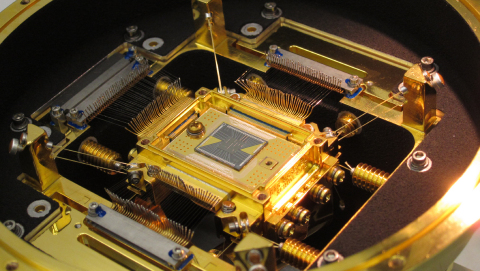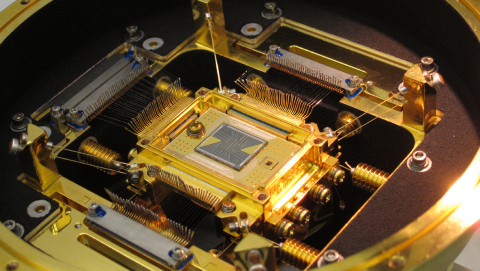BOLINGBROOK, Ill.--(BUSINESS WIRE)--On February 17, 2016, Hitomi, (also known as ASTRO-H) successfully launched from the Tanegashima Space Center in Kagoshima, Japan. This satellite contains a state-of-the-art instrument, a Soft X-ray Spectrometer (SXS), built around HgTe calorimeter tiles developed by EPIR Technologies, Inc. (EPIR). The instrument achieves unprecedented energy resolution due to EPIR’s processes to significantly reduce the tiles’ specific heat. EPIR’s technology provides a major contribution to the mission, which is an international collaboration led by JAXA (the Japan Aerospace Exploration Agency), and includes NASA.
The Hitomi satellite will observe distant galaxies and black holes, and it is expected to provide new insights on the mysteries of the universe through X-rays. The NASA-developed SXS sees X-ray “colors” with unparalleled spectral resolution by measuring the heat produced when X-ray photons strike the HgTe calorimeter tiles made by EPIR.
“Working with this outstanding team to send our technology into space for the first time is an important milestone for EPIR, and we look forward to continuing to develop next generation imaging technology for space observation,” said Dr. Sivalingam Sivananthan, Founder and Chairman of EPIR.
Upon the successful launch, ASTRO-H was renamed Hitomi, which means "pupil of the eye." Hitomi will allow astronomers to view the high-energy universe as it has never been seen before. It contains cutting-edge instruments covering a wide energy range, from low-energy soft X-rays around 300 electron volts (eV) to soft gamma rays up to 600,000 eV.
“It is an honor for us to collaborate with NASA and have our high-performing devices launched in space. I am very proud of our team and their hard work and dedication,” said Dr. Fikri Aqariden, President of EPIR.
This mission is the sixth satellite designed for X-ray astronomy, and it should be able to observe X-rays more than 10 times fainter than its predecessor, Suzaku, which operated for a decade until 2015. The Hitomi satellite is in low Earth orbit, and is expected to operate for three years.
For more information about Hitomi, please visit:




